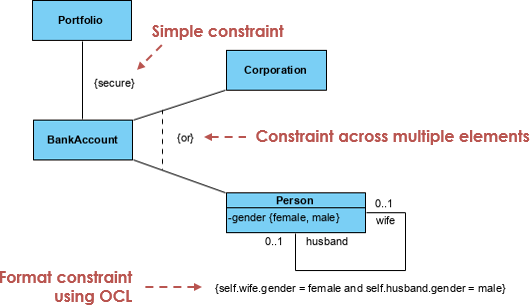The UML Extensibility Mechanism Explained
Introduction
The Unified Modeling Language (UML) serves as a versatile and standardized modeling language, invaluable for specifying, visualizing, constructing, and documenting a broad spectrum of system-intensive processes. Its architecture-centric, use case-driven, object-oriented, and component-based approach makes it a prominent choice across various domains and methodologies.
Nevertheless, despite its comprehensiveness, there are instances when you may find it necessary to adapt or extend UML to better suit your specific problem domain and facilitate effective communication. This is precisely where the UML extensibility mechanisms come into play.
Unveiling the Three UML Extensibility Mechanisms
The UML is intentionally designed to be open-ended, recognizing that a one-size-fits-all approach doesn’t cover every modeling nuance across all domains and timeframes. To address this, UML introduces three extensibility mechanisms:
-
Stereotypes: Stereotypes augment the UML vocabulary, enabling the creation of new building blocks derived from existing ones but tailored to your domain. They classify or mark UML building blocks, introducing elements that align with your problem’s language while resembling fundamental model components.

Example: In programming languages like Java or C++, modeling exceptions as first-class citizens can be achieved by marking them with an appropriate stereotype, as demonstrated with the “Overflow” class.

-
Tagged Values: Tagged values extend the properties of UML elements, allowing the inclusion of new information in an element’s specification. These properties define keyword-value pairs for model elements, enhancing the element’s specification. Tagged values can be defined for existing model elements or for specific stereotypes, ensuring that every element with that stereotype inherits the tagged value.

Example: Tagged values can be used to specify properties relevant to code generation or configuration management, such as programming language mappings, authorship, versioning, or configuration metadata.
Constraints: Constraints amplify the semantics of UML elements by adding new rules or modifying existing ones. They stipulate conditions that must hold true for a well-formed model, providing a means to enforce additional constraints or clarify aspects of an element’s specification.
Example: Constraints can be applied to associations to specify encryption requirements or to distinguish the manifest association among a set of associations.

Incorporating these extensibility mechanisms empowers you to adapt UML for specific needs without altering the underlying modeling language.
Effective Utilization of UML Extensibility
To maximize the benefits and minimize potential drawbacks of UML extensibility mechanisms:
- Standardize the use of a concise set of stereotypes, tagged values, and constraints within your project.
- Choose meaningful names for stereotypes and tagged values.
- Utilize free-form text for specifying constraints when precision can be relaxed; consider using the Object Constraint Language (OCL) for more rigorous expressions when necessary.
Remember, while these mechanisms enhance UML’s flexibility and utility, they may introduce interoperability challenges due to deviations from the standard UML form. Therefore, their use should be judiciously considered, employed only when indispensable to the specific project’s requirements.
Conclusion
In the realm of software engineering and system modeling, the Unified Modeling Language (UML) stands as a robust and adaptable tool. Its extensibility mechanisms—stereotypes, tagged values, and constraints—offer a crucial means to tailor UML to the unique needs of various problem domains without altering its core modeling language.
These mechanisms empower practitioners to create specialized building blocks, enrich element specifications, and enforce specific rules or conditions, all while adhering to the UML framework. However, to harness the full potential of UML extensibility, it is vital to follow best practices:
- Standardization: Embrace a standardized set of stereotypes, tagged values, and constraints across your project to maintain consistency and clarity.
- Meaningful Naming: Employ clear and meaningful names for stereotypes and tagged values, ensuring that their purpose remains evident.
- Flexibility and Precision: Choose between free-form text and the Object Constraint Language (OCL) depending on the level of precision required in expressing constraints.
While these extensibility mechanisms offer a wealth of customization possibilities, it is essential to exercise caution. Deviations from standard UML may lead to interoperability challenges. Thus, the decision to employ UML extensibility should always be a deliberate one, reserved for cases where it unequivocally enhances the effectiveness of your modeling efforts. In doing so judiciously, UML becomes not just a modeling language but a versatile tool for tackling complex problems across diverse domains and methodologies.

